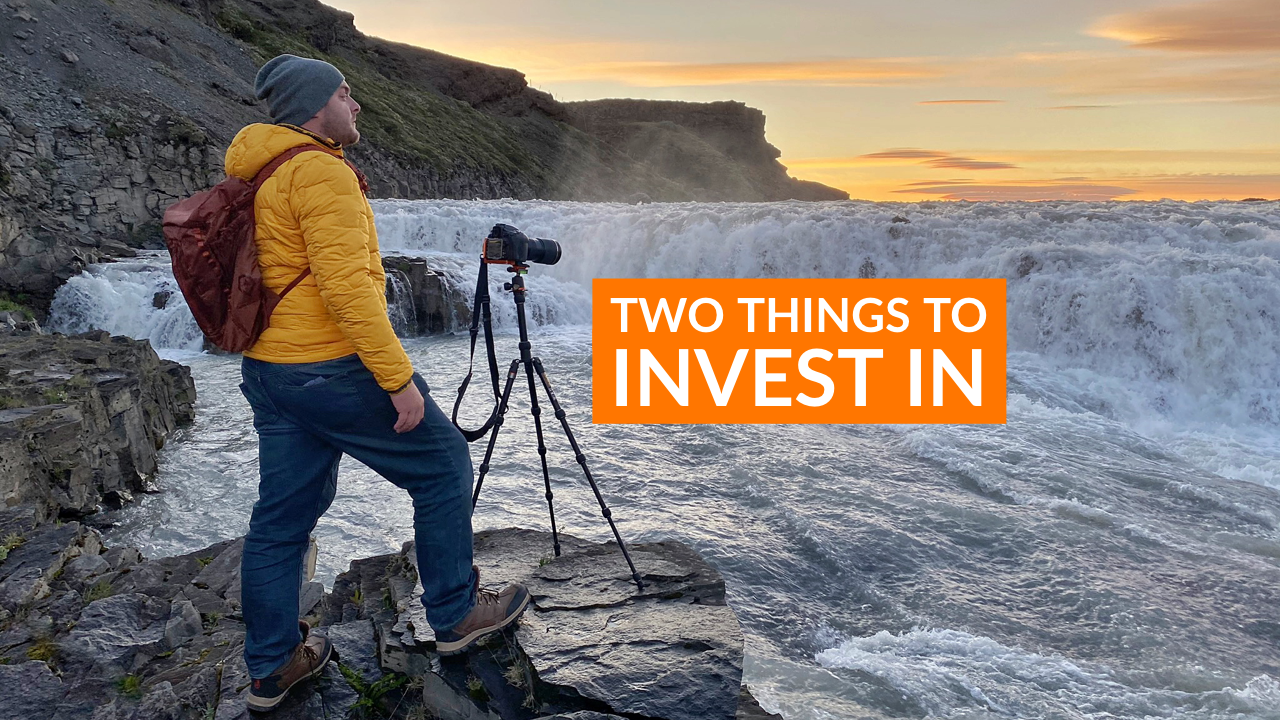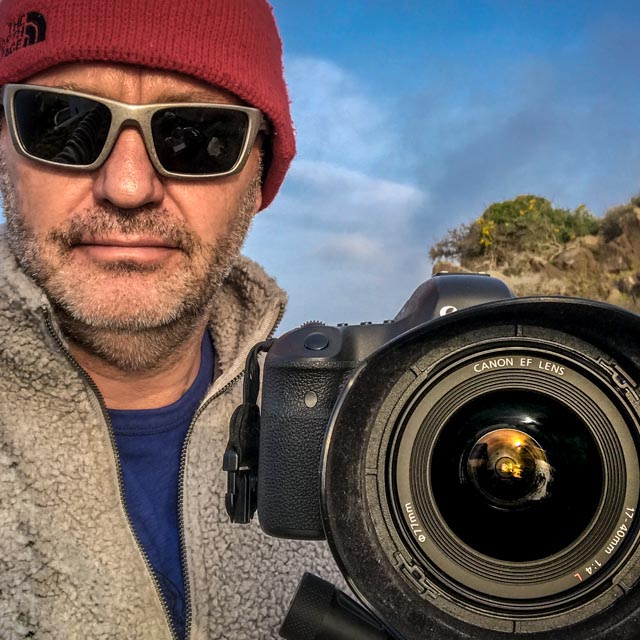
9 Top Tips From For Taking Better Photos in 2021
Hi from England, and I hope that you are safe, well and warm wherever you are.
I don’t seem to have taken many photos in 2020. The global pandemic has not helped but doing other stuff has also restricted my opportunities in what has been an incredibly difficult year for all of us.
Time to look forward to better days I say. I have decided that 2021 is the year that I get back to taking more photos, both for my clients, my business and also for myself. And with that thought in mind I am going to be making a concerted effort to take better photos as well. And this leads me seamlessly into this post (blimey – it almost sounds like I know what I am doing here), which I am delighted to be writing for Scott’s website.
These are my own words, thoughts, and opinions based on well over 30 years of photographic experience.
Ok let’s get in to all this good stuff.
1. Get Out and Take Photos
Yep, this is my number one tip. The number one way for you and I to improve our photography is to get off our collective backsides, get off the sofa, computer, tablet, phone, TV or games thing and get out there and take photos.
And it is so good for our physical and mental wellbeing to get out and about. Sure, there are restrictions that are in place now, but they will be gone hopefully and in 2021 we can all get back to normal life.
I still love doing this.
I find this one thing exciting even now, after well over 30 years of practising and enjoying my photography – I still get a buzz from packing my (small – see later) camera bag knowing that I am off to explore somewhere new.
And fresh air is good for us of course.
It is all good.
There is no negative to going out taking photos, unless you spend all your time doing this and neglect your nearest and dearest that is. And I am not advocating that of course!
Or if you still use film which is not cheap these days!
You will feel better for getting out and about, refreshed and invigorated, and you never know you might have some great photos to enjoy forever and a day.
So, get out and take some great photos with me in 2021. Well not actually with me but you know what I mean.
Talking of which, this is me photographing the wonderful Durdle Door.
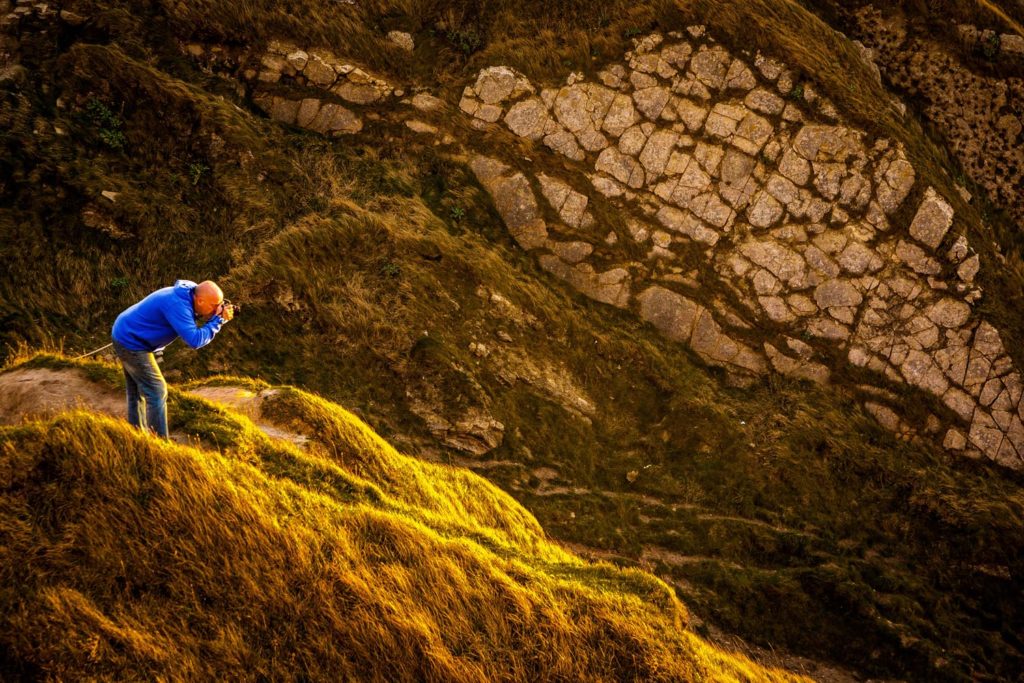
There is only one thing that I can guarantee though – if you do not get out and take photos you will not get any great new images.
2. Stop Looking at New Gear
I spent years doing this. I would buy some shiny new gear and use it and then be on the lookout for something else.
I even bought gear that I never actually used.
And do you know what – I spent more time looking at gear than I did taking photos.
And where did that get me?
Poorer and with cupboards full of stuff that I did not need. And my photography at a standstill.
Yep I did this for years. And then the penny dropped.
I was looking for something specific, and in looking for it I had to go plough through a whole heap of gear that I had either hardly used or not used at all.
The One-Year Rule
I put all this gear in a box (or three) and put that lot in the garage and invented the one-year rule.
And one year later the stuff was still there unused. I sold it all.
And unusually for me I learned from this lesson, and now only buy something if I specifically need it, or if I see something that will help me take better photos.
Ongoing Gear Lust
OK I’m not perfect – I have bought the odd thing that I did not need. But the real takeaway from this is that I do not look for gear any more – what I do is look for gear to fix a problem when a problem arises.
This is where I prove myself.
I am still using a Canon 6D Mk 1 – it took great photos in 2014 when I bought it and it still takes great photos in 2020. And will do so in 2021.
Which takes me nicely on to the next point…
3. Learn To Use Your Gear Properly
Sure, we all need gear. And we need things that we will only use from time to time. That is all fine and good.
And now you and I are no longer spending all our time lusting after more shiny new stuff we can use that time and learn the ins and outs of the gear we already have.
I am talking here about learning to use each and every bit of gear and learn how to use it all properly.
The Complicated Bit of Kit – The Camera
This of course starts with the lightproof box with the hole in it called the camera.
Read the manual that comes with your camera. It is a while since I bought a new camera to be fair (taking note of the previous point) – do you get manuals with cameras these days or is it all online? There is a lot to a camera, so it is time well spent.
This is what I did:
I bought a camera once and bought every book on how to use it. I never read any of them, I just got cracking with the camera without learning how to use it. But I felt good as I had gone to the trouble of buying some books…..
And do you know what? I found the camera disappointing, and the photos I took with it disappointing.
And it was all my fault!
My Canon 6D
When I bought my good old faithful Canon 6D (yes, I still use a Canon 6D Mk 1 and it still takes great photos as I said before) I did the same. But this was when I had my lightbulb moment.
Here it is on location in England:
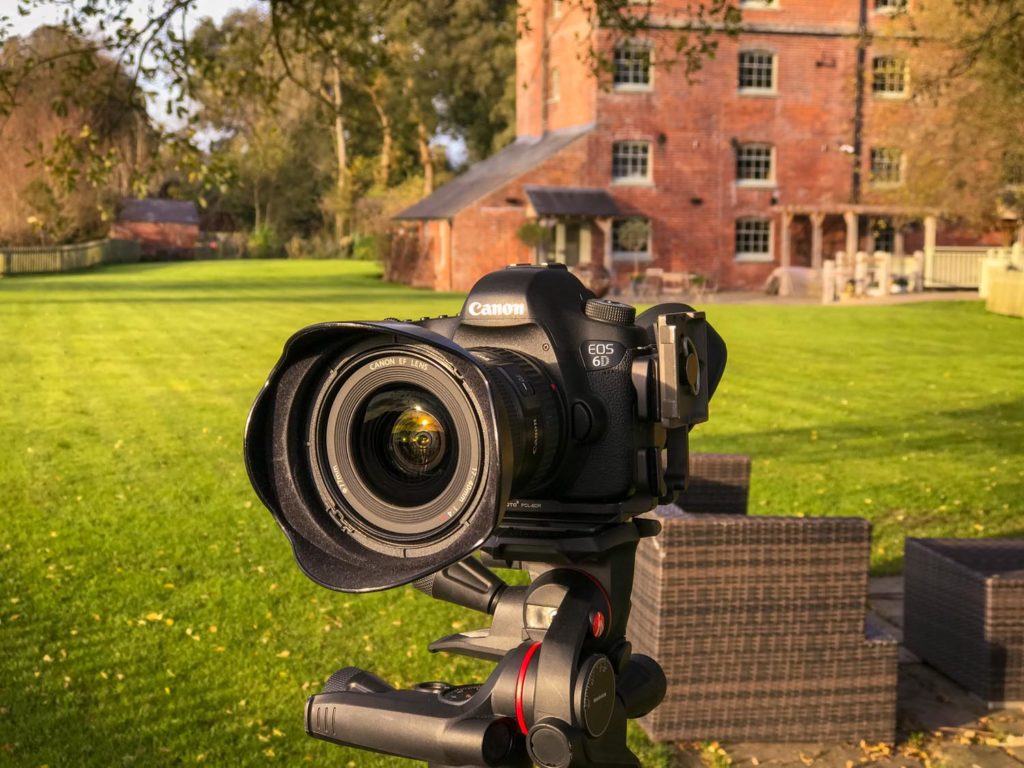
I sat down with the manual and went through it from start to end, trying out all the different settings and learning what this wonderful camera can do.
My One Book
I bought one book on the Canon 6D. It is still on my bookshelf today. I did not read all of the book but went through it and read the bits that were relevant to me.
Here is the book on my bookshelf – and yes this is my actual bookshelf and not set up for this article.:
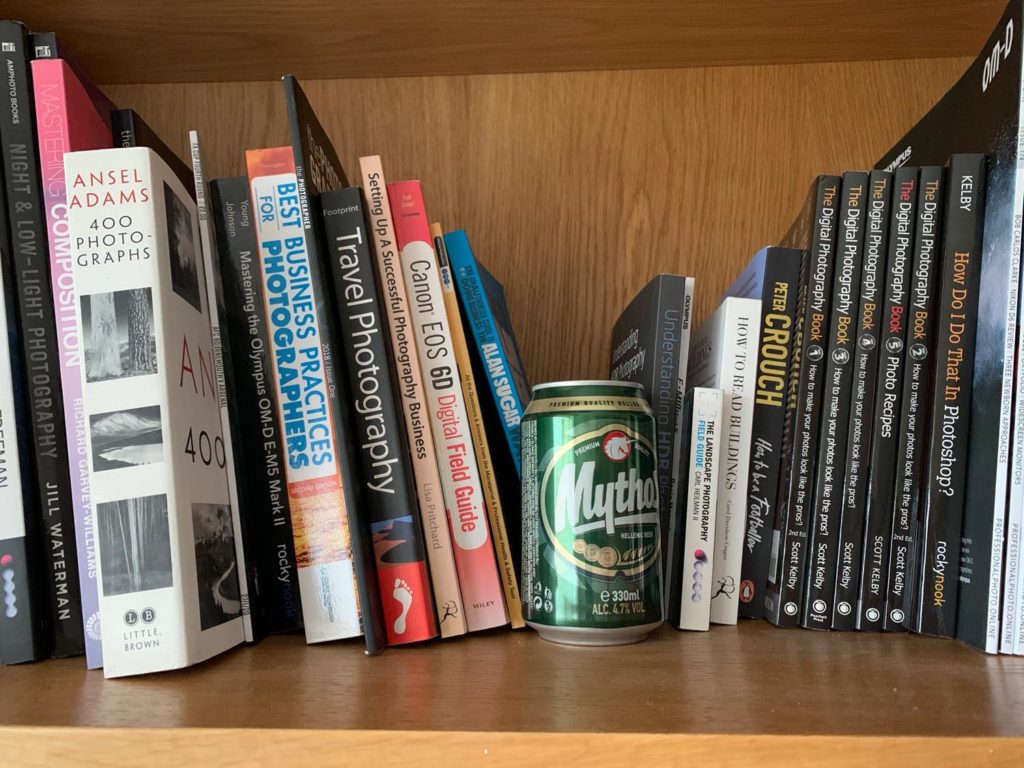
And I have never looked back.
Other Gear
Obviously other gear is less involved but you still need to know how stuff works in the camera and with other gear. This is very important – imagine the frustration of getting out taking photos and finding two bits of gear don’t work together – you need to work this out in the comfort of your own home.
And you should be able to use your camera and accessories in virtual darkness – that is when you know you have cracked it!
I can pretty much use my Canon 6D with my eyes closed.
So, learn to use your gear.
4. Don’t Take All Your Gear With You!
I remember the last time I did this. I had a huge Lowepro backpack, the one with a waterproof zip. And I mean fully waterproof, so I could take my camera bag safely onto the small RIB we used to use for diving. Yes, I really did this.
Anyway, on this day I drove to my local woods, got my full bag out, tripod strapped to the side.
Staggeringly Stupid
My bag was so heavy I could barely walk, but I was ok cos I had all my gear with me.
I got to an interesting spot and put my bag down, got out my Canon 6D and Canon 17-40mm lens and put my camera on my tripod.
I then zipped up my bag and put it back on my back.
I walked around for about three hours taking photos. This is one of them.
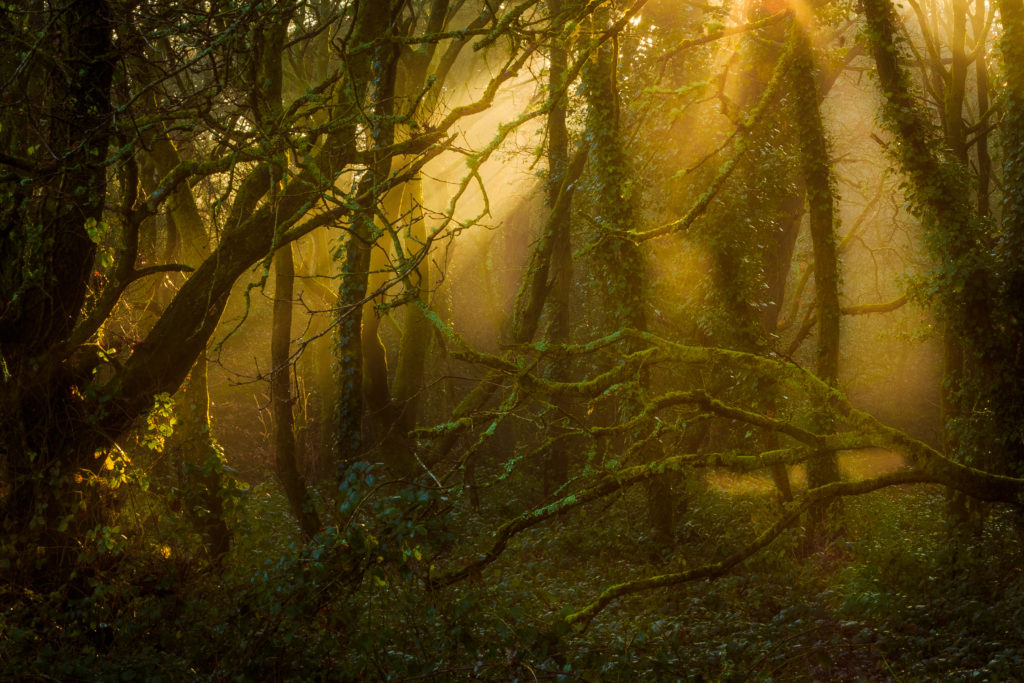
And I walked all the way back to the car and put my Canon 6D and lens back in my camera bag and attached the tripod back on the bag.
The Lightbulb Moment
I looked at my huge bag and asked myself the question – why did I bring all this gear? I think I have had this thought before but have put it to the back of my mind.
But here it was staring me in the face – why did I carry all that gear?
Just in case. That is why.
In case of what exactly?
Next time I took my Canon 6D, two lenses and minimal accessories and left the rest in my car in my massive bag.
And that is what I have done ever since.
I now use a 20 litre Peak Design Everyday Backpack – this is a small bag which means I cannot carry too much gear – there just isn’t room for it.
Since I made this change, I have never found myself in the desperate position of needing something that is in my car! And my back has thanked me every day since!
Less is so clearly more……
5. Use Your Tripod More
Obviously if you are into street photography, taking photos on the wing of a plane or while scuba diving then this might not apply to you.
But believe it or not when I put my camera on a tripod I take better photos. Seriously this is true.
For my architectural and construction photography work I take every photo I can on a tripod and have for years now. For this genre of photography this makes perfect sense.
Here is my camera on location on a tripod. Part in a river no less!

Why does this make a difference?
For me it makes taking a photo a more deliberate and considered act. It slows me down and makes me think. I used to wander around taking loads of rubbish photos. I would get home and get frustrated when I looked at those hundreds of photos and did not like any of them.
All Part Of The Learning
This was of course part of the learning process which we all need to go through – I just want to help you speed through this part of the learning process.
Give This A Go
Try once with a tripod and see what happens. Just do this one thing for me and let me know how you get on – and if it makes a difference or not.
If you hate it that’s fine. There are no rights or wrongs here and we are all different – I get that.
But just try once and you never know…
And there are of course times when you need a tripod, in low light levels for example, so it is pretty much an essential thing that a photographer needs to be able to use.
6. Focus On One Thing
I don’t mean with your camera. No – one thing, be it:
- Buildings
- Landscapes
- Dogs
- Cats
- Otters
- Trees
- Rivers
- Fridges
- Biscuits
- Light bulbs
- Car tyres
- Tupperware
(This list gives you an excellent insight into how my mind works..).
Whatever that thing is photograph it and photograph it and photograph it. Create your thing and make it yours. Own it.
Best do this with something that you are interested in though. Ignore the Tupperware.
What is my thing?
I photograph buildings. On my website I make this perfectly clear. This is my thing. I also photograph nice places and buildings in nice places. This is the work that I do.
I do not do:
- Weddings
- Family portraits
- Christenings
- Pets
- Graduation ceremonies
- Anything involving things that either move, are alive or answer back.
Here is a photograph of a nice building in a nice place.
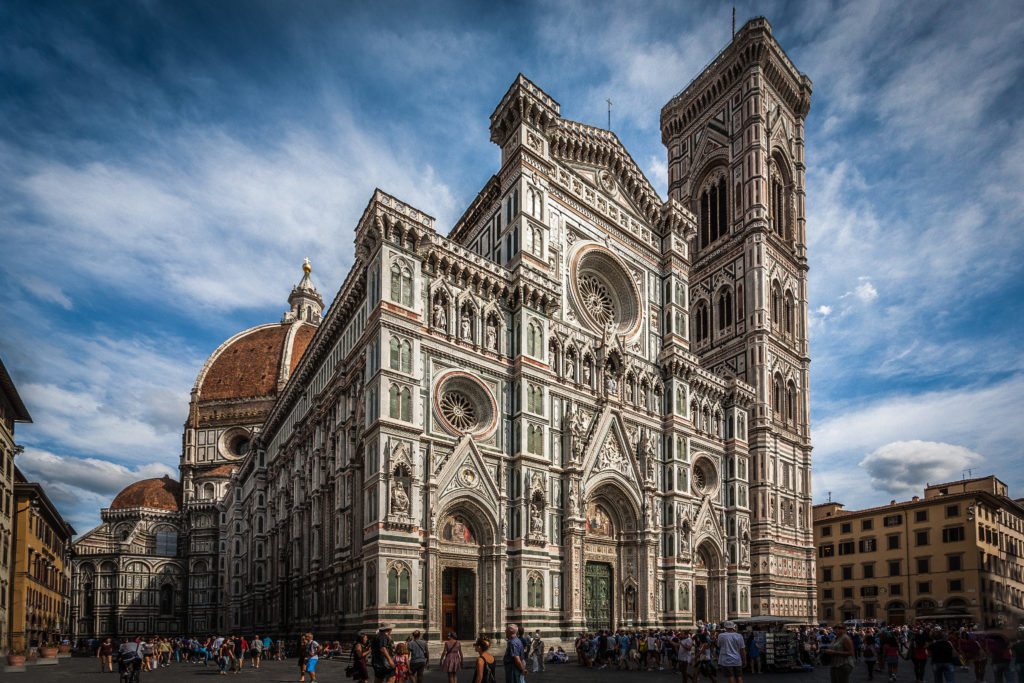
7. Learn Composition From The Greats
Now this is something that I continue to fail to do. Well, apart from the Ansel Adams calendar in my office that is that gives me a daily reminder of how rubbish I am in comparison.
Work for Me Next Year
I am going to do more of this next year. I am going to look at the work of the most successful photographers and see what makes their photos great.
And what makes them great photographers.
I am going to take this learning and apply it to the photos that I take. I am going to spend more and more time thinking about and learning about composition.
More Books
As I look up to my bookshelf I have a couple of books on composition that I have never read.
Shame on me!
Back To My Tripod Point
Once your camera is on a tripod getting a great composition becomes easier, trust me. I found that my architectural photography work improved once I took every photo on a tripod.
Technical Correctness
The photos were more technically correct as I could get horizontals and verticals right in camera, which is much harder to do handheld.
But I took this further, spending more time on each photo I took, making sure that the composition was the best I could get.
So, I took more time on each photo and guess what?
My photos got better!
And another thing happened – in time I realised I was taking less photos but still getting a similar number of images to issue to the client. Less photos, less sorting out in Lightroom, less memory being used up.
Better photos produced in less time – what is not to love?
Here is one of those photos taken with my tripod in an unusual position.
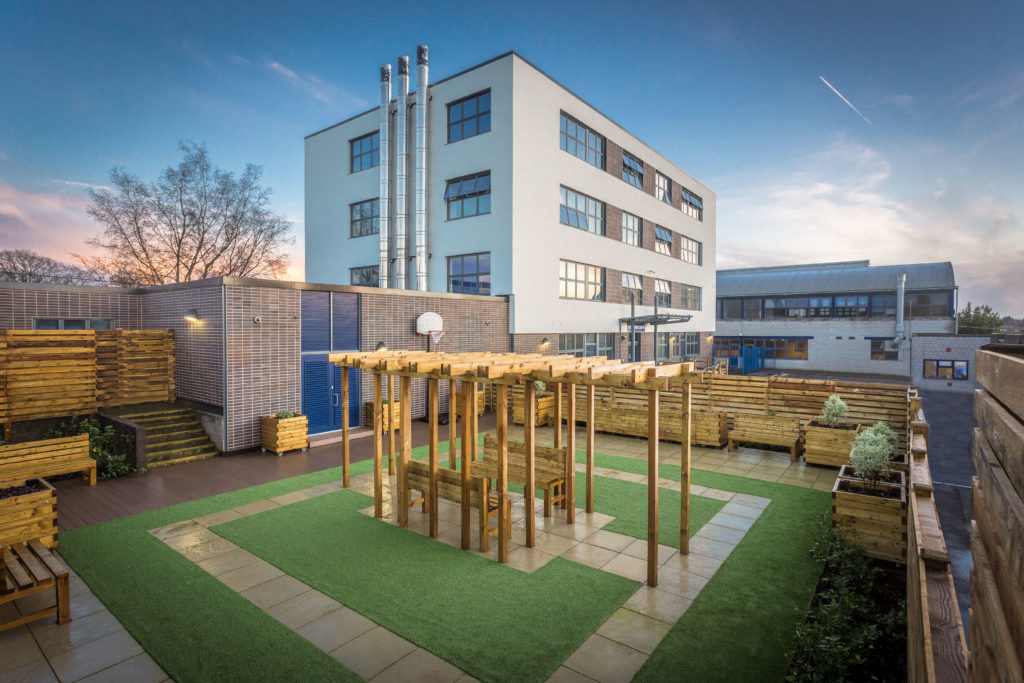
8. Listen To Some Great Photography Podcasts
I listen to podcasts when I am driving around on my own, when I am exercising (which is not often to be fair), doing the gardening, anything really. And I have learnt so much which has helped me, my photography and my business.
This Is What I Am Listening To At The Moment
- The Grid – yes, I really do listen to this Scott!
- Peta Pixel Photography Podcast – still entertaining and quirky
- Six Figure Photography – excellent business tips
- FroKnowsPhoto – to the point!
- Business of Photography – excellent business tips
- Martin Bailey Photography Podcast – first time I heard myself recorded properly I thought I was Martin Bailey!
- The Togcast – two UK photographers talk photography
- Photography Explained – sorry for this shameful plug of my own podcast but hey why not?
9. Enjoy Your Photography
We can all take life too seriously. Photography is a thing to be enjoyed.
I still get a buzz from processing a set of images for a client after all these years.
And I still love packing my camera bag (with not a lot) and getting out taking photos. Going out taking photos is such a liberating, pleasurable thing to do.
My Photo Collection
I also love looking back on the over 80,000 photos in my Lightroom catalogue from all over the world.
Getting out and taking photos is the start of the journey into photography, which has led me to so many places and things that I would never have ended up seeing or doing.
Here are three photos that are great examples of me being in situations that I would never have been in if it was not for photography.
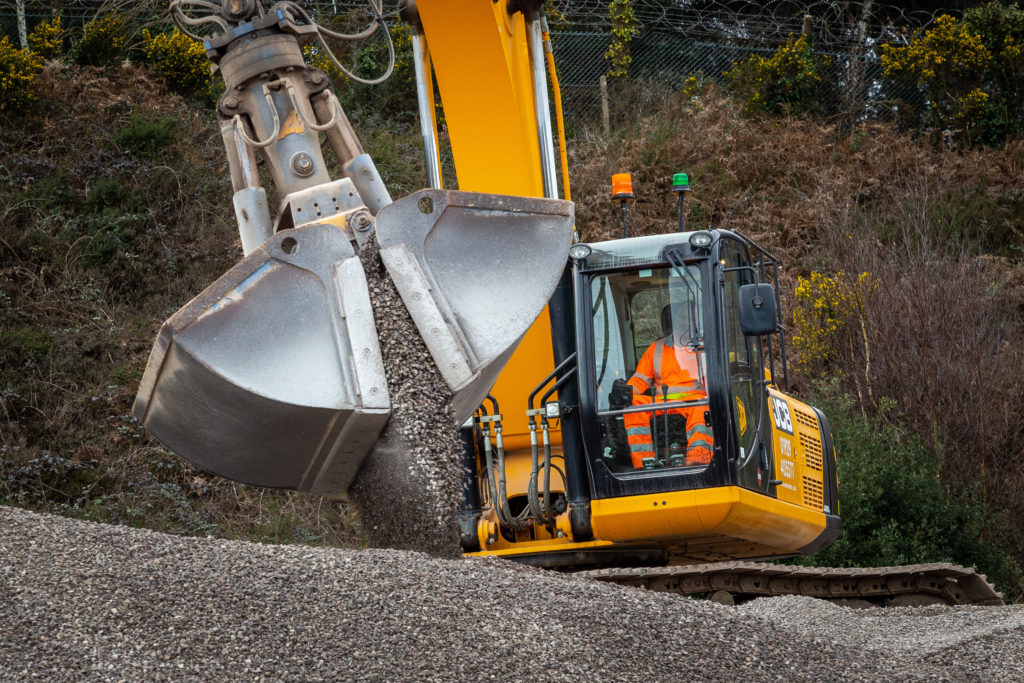

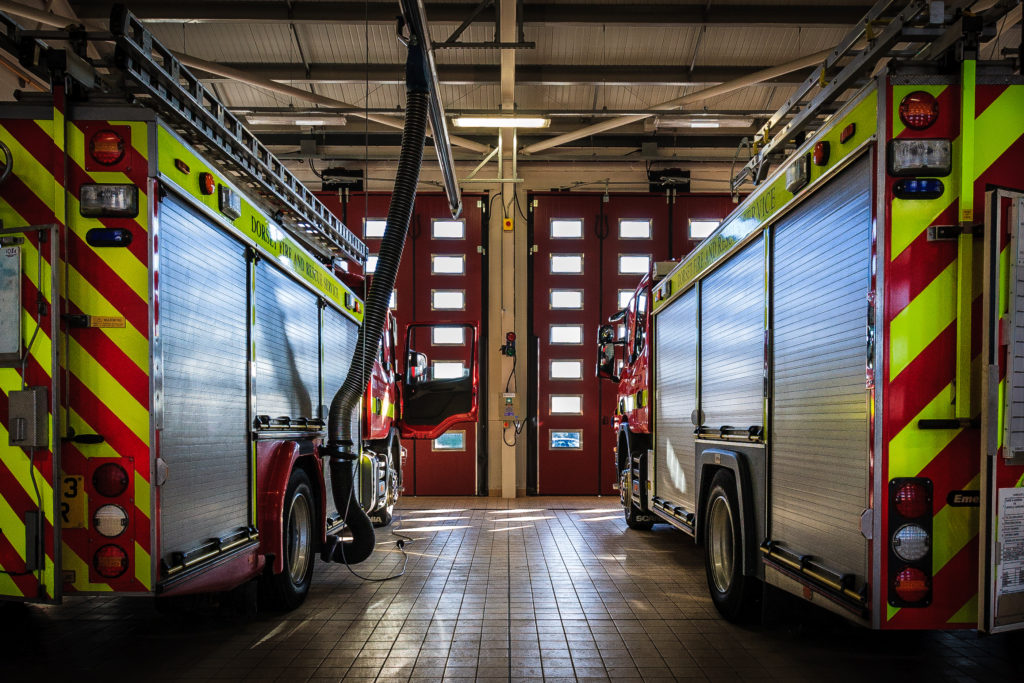
Thanks for reading this post, and any questions ask Scott!
Rick McEvoy is an architectural and construction photographer based on the south coast of England. Check out his work on his website. He is an Associate member of the British Institute of Professional Photography, and has been into photography for well over 30 years now (he is quite old). As well as taking photos he has a weekly photography blog, and is the creator of the short but perfectly formed Photography Explained Podcast.



